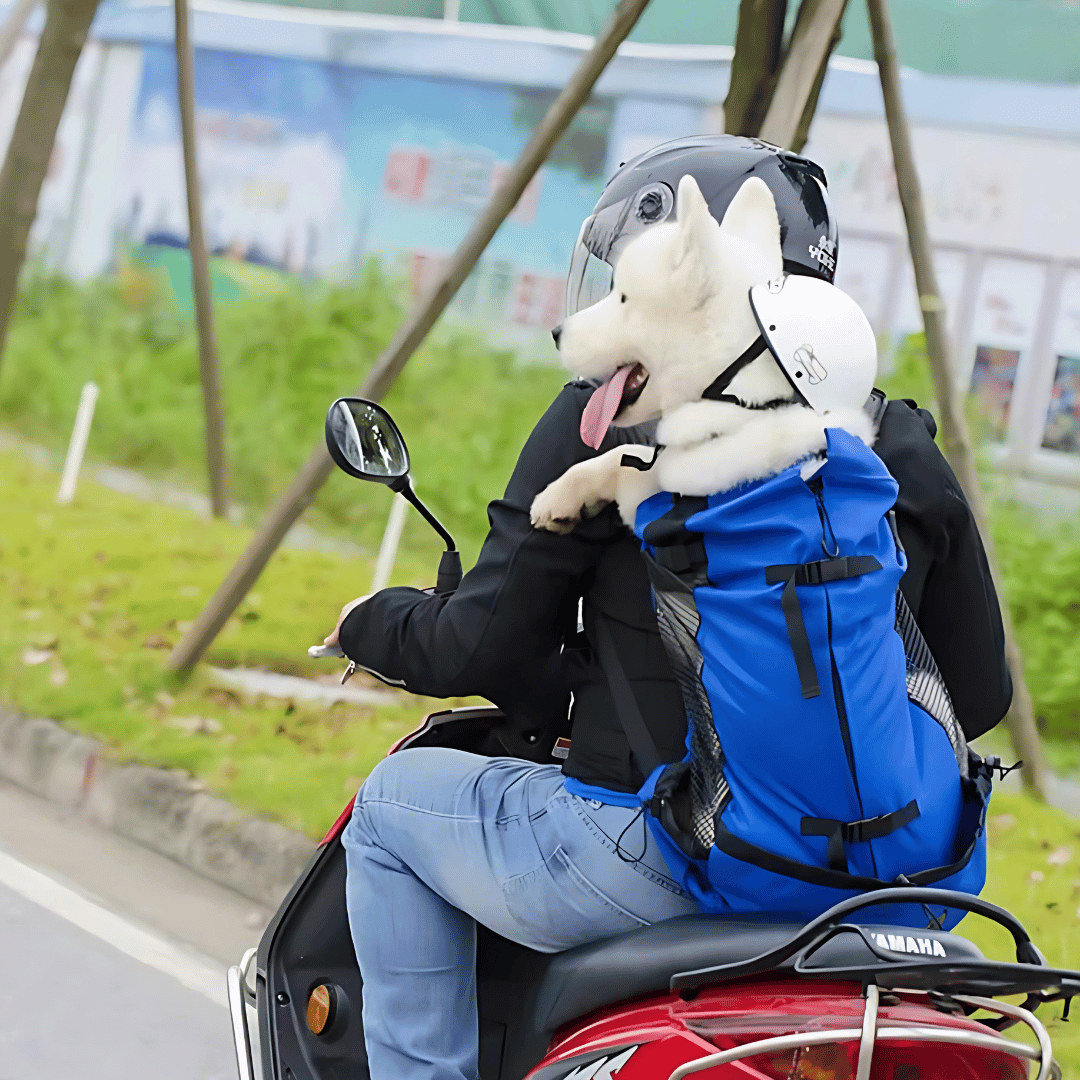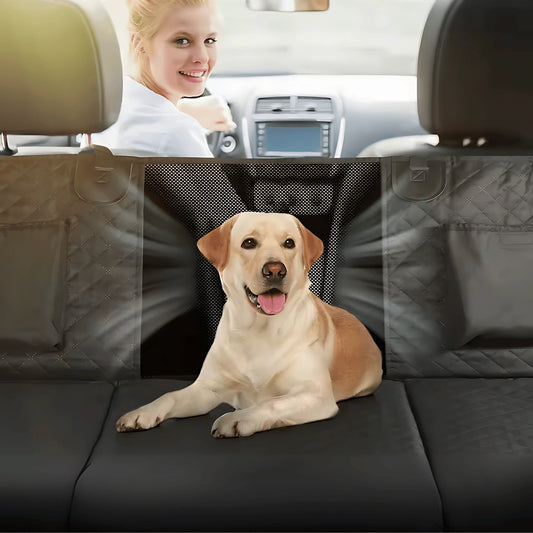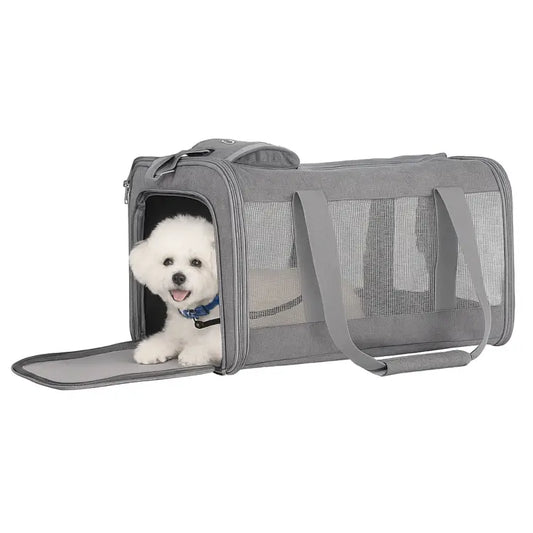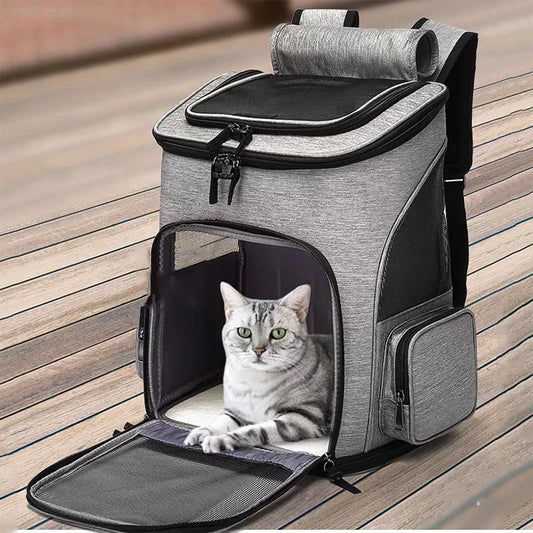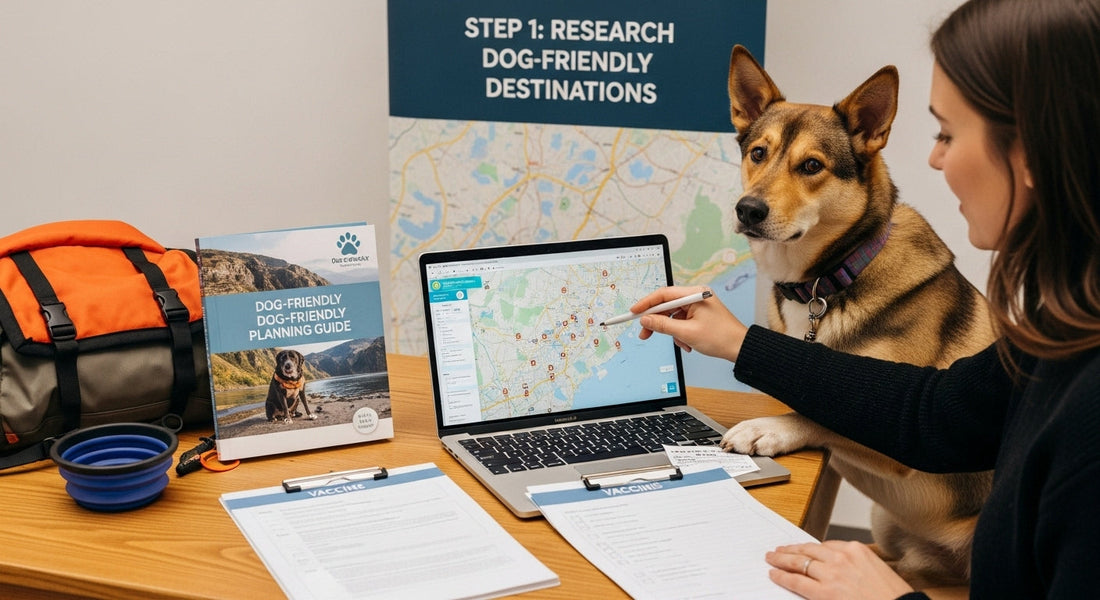
Ultimate Dog-Friendly Travel Planning Guide for Adventurers
Share
Traveling with your dog can sound overwhelming, especially when every destination has its own set of rules and potential pitfalls. Most people skip the research and hope for the best. But what really stops trips in their tracks is missing a single detail. Some places require specific vaccination proof and health certificates for dogs and these can derail your plans with one forgotten slip. The real win comes before your road trip even starts.
Table of Contents
- Step 1: Research Dog-Friendly Destinations
- Step 2: Evaluate Travel Gear For Your Dog
- Step 3: Plan A Pet-Friendly Itinerary
- Step 4: Make Accommodations And Transportation Arrangements
- Step 5: Prepare Essential Supplies For Your Trip
- Step 6: Verify Safety And Comfort For Your Dog
Quick Summary
| Key Point | Explanation |
|---|---|
| 1. Research dog entry requirements | Understand pet regulations to avoid travel disruptions due to differing rules on vaccinations and documentation across destinations. |
| 2. Choose appropriate travel gear | Select gear suited for your dog’s size and travel mode, ensuring safety and comfort during your journey. |
| 3. Plan a pet-friendly itinerary | Balance daily activities with your dog’s needs, providing enough exercise and rest to prevent stress during travel. |
| 4. Confirm pet-friendly accommodations | Look for lodging that offers amenities for dogs and verify all pet policies and potential fees in advance. |
| 5. Prepare essential travel supplies | Assemble a dedicated travel kit with enough food, health supplies, and comfort items to support your dog during the trip. |
Step 1: Research Dog-Friendly Destinations
Successful dog-friendly travel starts with comprehensive destination research. Understanding local regulations, pet policies, and potential challenges can transform a potentially stressful trip into an exciting adventure for you and your furry companion. The key is gathering detailed information about destinations that genuinely welcome canine travelers.
Begin by examining the specific pet regulations of your potential travel locations. Different regions have varying requirements for animal entry, which can include vaccination records, microchip documentation, and quarantine protocols. National parks, cities, and even individual campgrounds have unique rules regarding dogs. Some destinations require additional health certificates or specific vaccination proof, so verifying these details months before your trip prevents last-minute travel disruptions.
Online resources and dedicated pet travel websites become invaluable during this research phase. Comprehensive dog travel guides provide insights into entry requirements, transportation regulations, and regional pet-friendly amenities. Consider checking official government websites, tourism boards, and specialized pet travel forums that offer current, accurate information about dog entry restrictions and recommended practices.
Regional climate and terrain also play crucial roles in destination suitability. High-altitude locations, extreme temperatures, or rugged landscapes might challenge certain dog breeds. Research your specific dog’s physical capabilities and potential health risks associated with different environments. For instance, short-nosed breeds might struggle in hot climates, while smaller dogs could find mountainous terrain challenging.
When evaluating potential destinations, create a systematic checklist that includes:
- Pet entry documentation requirements
- Local veterinary clinic availability
- Dog-friendly accommodation options
- Transportation restrictions
- Potential health risks or environmental challenges
By meticulously researching destinations, you transform potential obstacles into manageable details. This preparatory step ensures a smoother, more enjoyable travel experience for both you and your four-legged adventure partner. Read more about preparing for dog-friendly road trips to complement your destination research and set the stage for an unforgettable journey.
Step 2: Evaluate Travel Gear for Your Dog
Selecting the right travel gear transforms your dog from a potential travel challenge into a confident adventure companion. Proper equipment ensures safety, comfort, and enjoyment for both you and your four-legged friend. This step requires thoughtful assessment of your dog’s specific needs, travel mode, and destination characteristics.
Start by considering your dog’s size, age, and physical condition when selecting travel gear. Smaller dogs might require specialized carriers, while larger breeds need robust harnesses and protective equipment. Top pet travel essentials can provide excellent baseline recommendations for different travel scenarios.
Vehicle safety becomes paramount during travel. According to guidelines from the CDC, restraining your dog prevents potential injuries and driver distractions. Invest in a high-quality, crash-tested harness or a well-ventilated crate that allows your dog to stand, sit, and turn comfortably. The crate should be appropriately sized and securely fastened to prevent shifting during unexpected movements.
Beyond transportation, consider destination-specific gear. Hiking trips require different equipment compared to urban explorations. Protective booties shield paws from hot pavements or rough terrain, while lightweight, breathable cooling vests help manage temperature extremes. Collapsible water bowls, portable food containers, and compact first-aid kits become essential companions for varied travel environments.
When evaluating travel gear, prioritize multi-functional items that balance weight, durability, and practicality. Your gear checklist should include:
- Secure vehicle restraint system
- Portable water and food solutions
- Weather-appropriate protective clothing
- Compact first-aid kit
- Identification tags and travel documentation
Verify your gear’s effectiveness by conducting short test trips before embarking on longer adventures.
This allows you to identify and address potential comfort or safety issues, ensuring a smooth travel experience. By meticulously selecting and testing travel gear, you create a foundation for memorable, stress-free journeys with your canine companion.
Step 3: Plan a Pet-Friendly Itinerary
Crafting a pet-friendly itinerary requires strategic planning that considers your dog’s unique needs, energy levels, and physical capabilities. Successful travel is about creating a balanced experience that keeps both human and canine companions comfortable and engaged. This step transforms your travel blueprint into a thoughtful, enjoyable journey that accommodates your four-legged adventurer.
Begin by mapping out daily activities that provide appropriate levels of exercise and rest for your dog. Some destinations offer incredible dog-friendly trails, parks, and outdoor spaces that become perfect exploration zones. Research local pet regulations, leash requirements, and designated dog areas to prevent unexpected complications. Consider your dog’s stamina and select activities that match their physical condition, avoiding overly strenuous experiences that could cause exhaustion or stress.
Airline travel with pets introduces additional complexity to itinerary planning. If your journey involves air travel, factor in specific requirements like carrier dimensions, health certifications, and potential layover accommodations. Strategically schedule flights during moderate temperature periods and select routes with minimal connections to reduce travel strain on your dog.
Accommodation selection becomes crucial in pet-friendly travel planning. Look for lodging that not only permits dogs but provides genuine amenities and nearby walking areas. Some hotels offer specialized pet services, while vacation rentals might provide more flexible, home-like environments. Always confirm pet policies, potential additional fees, and any size or breed restrictions before booking.
When constructing your travel schedule, incorporate flexibility and buffer time. Dogs, like humans, can experience travel fatigue and unexpected health challenges. Plan rest periods, have backup activity options, and remain adaptable to your dog’s comfort and energy levels.
Your ideal pet-friendly itinerary should include:
- Balanced mix of activity and rest periods
- Dog-friendly location research
- Flexible scheduling
- Emergency veterinary contact information
- Backup activity alternatives
Successful itinerary planning transforms potential travel stress into an exciting, shared adventure. By thoughtfully considering your dog’s needs and preparing comprehensive plans, you create opportunities for unforgettable memories and strengthened companionship.
Step 4: Make Accommodations and Transportation Arrangements
Making strategic accommodations and transportation arrangements represents the critical infrastructure of successful dog-friendly travel. Your goal is to create a seamless, stress-free travel experience that prioritizes your dog’s comfort and safety. This step transforms logistical challenges into smooth, well-coordinated travel plans.
Begin by thoroughly researching pet-friendly accommodations that go beyond basic acceptance. Look for lodgings that offer genuine amenities like designated walking areas, nearby parks, and understanding staff. Some hotels provide specialized pet services, including dog-sitting, grooming, and even welcome packages. Carefully review size restrictions, additional fees, and specific pet policies to prevent last-minute complications.
Airline travel with pets demands meticulous preparation. According to travel regulations, different transportation methods have unique requirements. For air travel, confirm carrier dimensions, health certification needs, and potential quarantine regulations. Some airlines require specific kennel sizes, health documentation, and advance notification for pet passengers.
Transportation arrangements extend beyond airlines. If road tripping, select vehicle configurations that provide secure, comfortable spaces for your dog. Invest in quality restraints like harnesses or crates that prevent movement during transit and protect both pet and passengers. Consider temperature control, frequent rest stops, and access to water and comfort breaks.
When booking accommodations and transportation, compile a comprehensive documentation package. This should include:
- Updated vaccination records
- Health certificates
- Microchip information
- Emergency veterinary contact details
- Proof of recent health examinations
Verify all arrangements at least two weeks before departure. Contact accommodations to confirm pet policies, reach out to transportation providers to understand specific requirements, and ensure all documentation is current and accessible. By approaching accommodations and transportation with detailed planning, you transform potential stress points into smooth, enjoyable travel experiences that set the stage for memorable adventures with your canine companion.
Step 5: Prepare Essential Supplies for Your Trip
Preparing essential supplies transforms your travel from a potential logistical nightmare into a smooth, enjoyable adventure with your canine companion. Your packing strategy should balance comprehensive preparedness with practical mobility, ensuring you have everything needed without becoming overburdened.
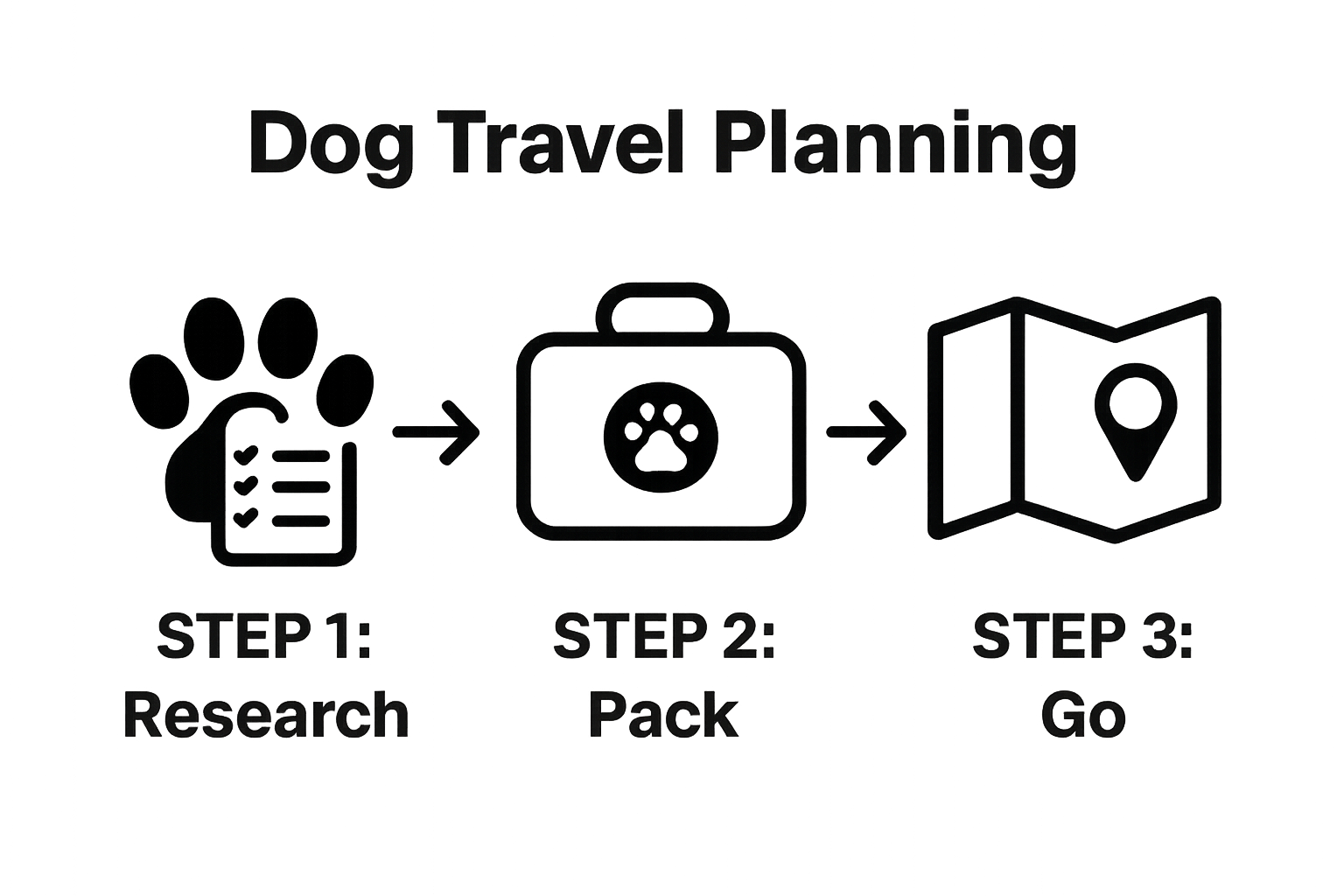 This step is about creating a portable support system that keeps your dog comfortable, safe, and ready for any unexpected situation.
This step is about creating a portable support system that keeps your dog comfortable, safe, and ready for any unexpected situation.
Start by assembling a dedicated travel kit that goes beyond basic necessities. Packing your pet travel bag requires thoughtful consideration of your specific destination and travel mode. According to emergency preparedness guidelines, include a two-week supply of your dog’s regular food, portable water containers, collapsible bowls, and any specialized medications. Choose compact, lightweight versions of essential items to minimize luggage weight while maintaining comprehensive coverage.
Health and safety equipment becomes paramount in your travel preparations. Pack a comprehensive first-aid kit tailored to canine needs, including items like sterile gauze, antiseptic wipes, tweezers, and any prescription medications. Include copies of veterinary records, vaccination documentation, and your dog’s medical history. Consider microchip information and recent photographs as additional precautionary measures in case of unexpected separation.
Comfort and entertainment supplies play a crucial role in maintaining your dog’s emotional well-being during travel. Pack familiar items like their favorite blanket, a few select toys, and comfort objects that provide a sense of home. These psychological anchors help reduce travel-related stress and provide reassurance in unfamiliar environments. Select items that are durable, washable, and compact enough to fit easily in your travel kit.
Your comprehensive travel supplies checklist should include:
- Two-week supply of regular dog food
- Portable water containers
- Canine first-aid kit
- Medical records and identification
- Comfort items and familiar toys
- Medication and supplements
- Compact grooming supplies
Verify your supply kit by conducting a final review the night before departure. Ensure all items are easily accessible, properly sealed, and organized for quick retrieval.
Here is a checklist to help you organize and verify all your dog’s travel supplies before departure.
| Supply Item | Purpose/Notes |
|---|---|
| Two-week supply of dog food | Ensures consistent diet throughout the trip |
| Portable water containers | Provides hydration on the go |
| Canine first-aid kit | Covers common medical needs and emergencies |
| Medical records and identification | Required for entry, emergencies, and veterinary visits |
| Comfort items and familiar toys | Reduces travel stress and maintains emotional well-being |
| Medication and supplements | Maintains health and addresses specific medical conditions |
| Compact grooming supplies | Keeps your dog clean and comfortable during travel |
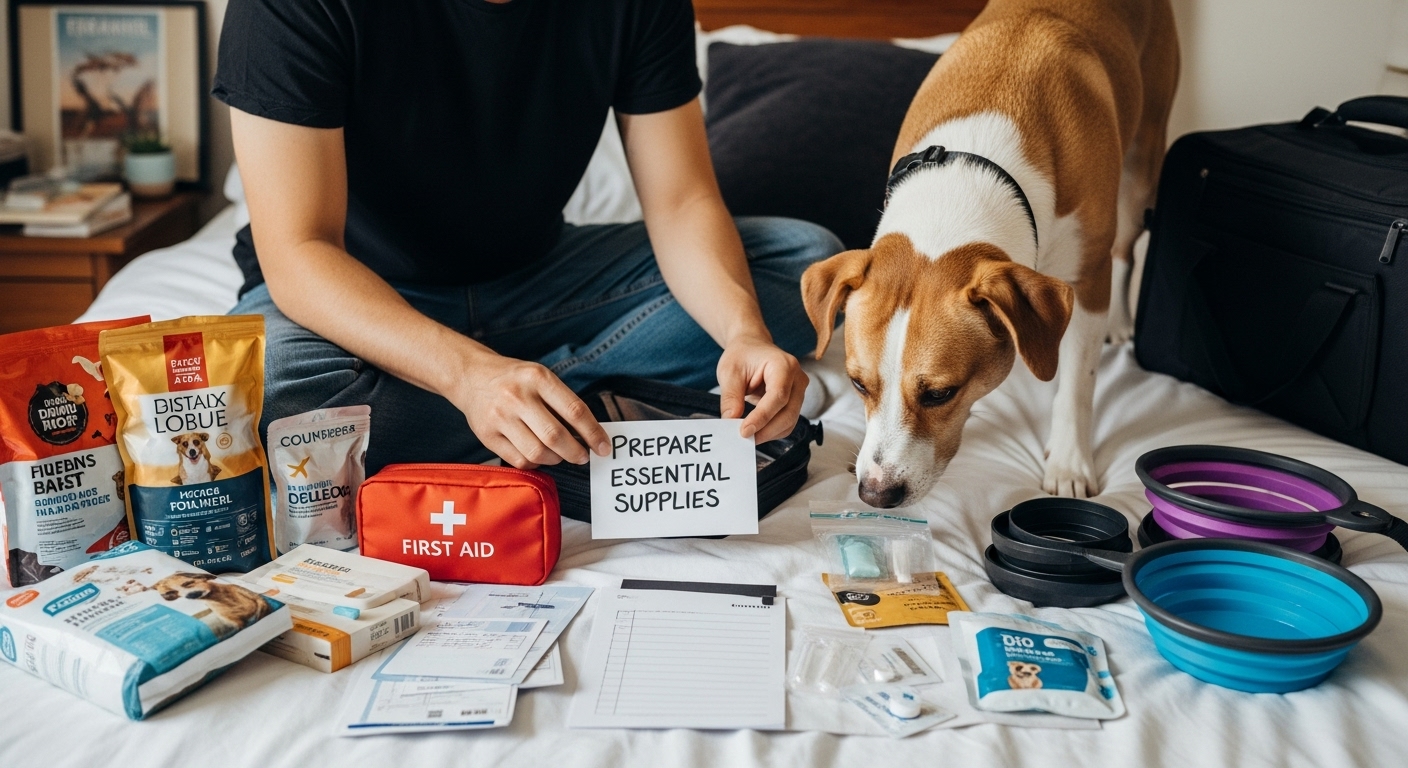
Step 6: Verify Safety and Comfort for Your Dog
Verifying your dog’s safety and comfort represents the culmination of careful preparation, transforming potential travel stress into a relaxed, enjoyable experience. Your ultimate goal is creating an environment where your canine companion feels secure, protected, and emotionally supported throughout the journey. This step involves a holistic approach to assessing physical and psychological travel readiness.
Begin with a comprehensive pre-travel health evaluation. Schedule a veterinary checkup to confirm your dog is physically prepared for the upcoming adventure. Discuss potential motion sickness, anxiety management, and any destination-specific health considerations. Reducing pet travel anxiety becomes crucial, especially for dogs experiencing travel-related stress. Consider anxiety-reduction techniques like gradual exposure to travel environments, calming supplements, or compression garments that provide a sense of security.
According to travel safety guidelines, microchip information and identification are critical safety components. Ensure your dog’s microchip is updated with current contact details and that they wear a sturdy collar with legible tags containing your current phone number and travel destination information. Pack digital and physical copies of vaccination records, medical history, and emergency contact details for veterinarians along your travel route.
Physical comfort requires strategic planning tailored to your specific travel mode and destination. For vehicle travel, invest in high-quality restraints that allow movement while preventing dangerous shifts during transit. Select carriers or harnesses that permit your dog to stand, turn, and lie down comfortably. Consider temperature regulation, providing cooling mats for warm environments or warming blankets for cooler destinations.
Your safety and comfort verification checklist should include:
- Updated microchip and identification information
- Current vaccination records
- Anxiety management strategies
- Appropriate travel restraints
- Temperature regulation accessories
- Emergency veterinary contact list
- Familiar comfort items
Verify your preparation by conducting a short practice journey, simulating travel conditions. Observe your dog’s stress levels, comfort, and overall response to the controlled environment. By meticulously addressing safety and comfort, you create a foundation for a memorable, stress-free adventure that strengthens the bond between you and your four-legged travel companion.
Gear Up for Worry-Free Dog Adventures
Dreaming of seamless travel with your dog but worried about unexpected challenges like cramped carriers, uncomfortable rests, or last-minute gear confusion? The planning guide above highlights how critical it is to have reliable, adventure-ready gear so you and your pup can focus on making memories without stress. Whether you’re planning a hiking road trip or a cross-country flight, the right essentials—carriers, beds, and travel accessories—make all the difference for both safety and comfort.
Find the perfect carrier for every adventure
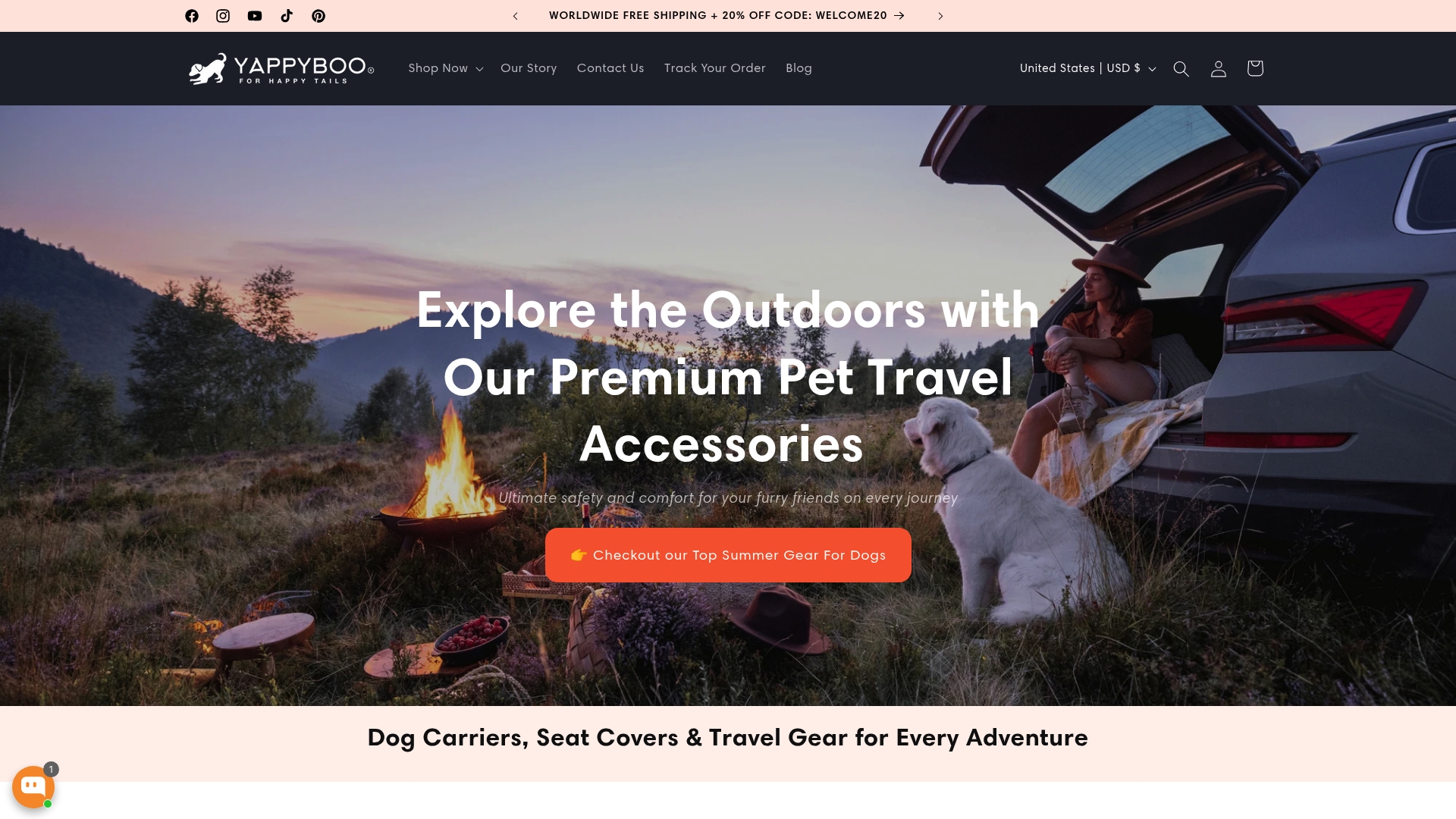
Don’t settle for makeshift solutions. Discover the entire range of durable, travel-focused products for your pup at YappyBoo.store and see why active dog lovers trust us for everything from portable travel beds to innovative car accessories. Order now for exclusive deals and free worldwide shipping—make your dog’s next journey truly unforgettable.
Frequently Asked Questions
What should I research before traveling with my dog?
Before traveling with your dog, research pet regulations, local veterinary clinic availability, dog-friendly accommodations, transportation restrictions, and potential health risks associated with your destination.
How can I ensure my dog’s safety while traveling?
To ensure your dog’s safety, invest in a crash-tested harness or a secure crate for transportation. Make sure your dog’s identification is up-to-date, including a microchip and collar tags with your current contact information.
What essential supplies should I pack for my dog during travel?
Pack a two-week supply of regular dog food, portable water containers, a canine first-aid kit, medical records, comfort items like toys, and any medications or supplements your dog may need.
How can I create a balanced itinerary for dog-friendly travel?
Create a balanced itinerary by mapping out activities that include both exercise and rest for your dog. Research local dog-friendly parks and trails, and consider your dog’s stamina to avoid overexertion.
Recommended
- How to Prepare Your Dog for Long Road Trips – Yappyboo
- 🧳 What to Pack in Your Pet Travel Bag (Checklist Inside!) – Yappyboo
- Hiking with Dogs: Safety Tips & Gear Guide – Yappyboo
- Essential Summer Gear for Dogs: Keep Your Furry Friend Cool – Yappyboo
- Ultimate Weekend Trip Packing List for Stress-Free Travel - Yopki
